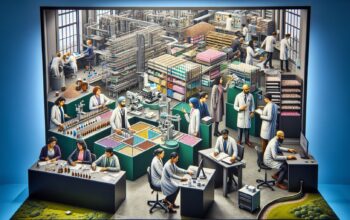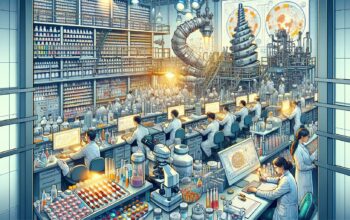
In today’s fast-paced world, the pharmaceutical industry plays a critical role in improving our health and well-being. From common cold remedies to groundbreaking treatments for life-threatening diseases, medicines have become an integral part of our lives. This blog post aims to provide a glimpse into the vast and evolving pharmaceutical world, exploring its impact, challenges, and opportunities.
The Journey Begins: From Discovery to Approval
The development of a new medicine is a complex and intricate process that can take over a decade from start to finish. It begins with extensive research and discovery, often in academic or institutional settings, where scientists identify potential drug candidates. These candidates undergo rigorous testing in laboratories, uncovering their efficacy, optimal dosage, and potential side effects. Only a small fraction of tested compounds proceed to the next stage.
Once a promising candidate is identified, it enters a series of clinical trials. These trials, involving human volunteers, help determine the medicine’s safety, dosage, and effectiveness compared to current treatments or placebos. It is crucial to strike a balance between achieving positive outcomes and minimizing risks before proceeding to the next phase.
Following successful clinical trials, the pharmaceutical company seeks regulatory approval from health authorities such as the Food and Drug Administration (FDA) or the European Medicines Agency (EMA). These organizations evaluate the extensive data collected during trials to ensure the medicine’s safety and efficacy meet stringent standards. If approved, the medicine becomes available for patients, marking a significant milestone in the pharmaceutical world.
The Challenges and Innovations
The pharmaceutical industry faces an array of challenges that require constant innovation and adaptation. One of the primary hurdles is the rising cost of research and development (R&D). Pharmaceutical companies invest billions in research and clinical trials but often face significant financial risks if a potential medicine fails in later stages of development. Balancing profitability and accessibility is a delicate equilibrium the industry strives to maintain.
Furthermore, patent protection is another crucial aspect for pharmaceutical companies. Patents provide temporary exclusivity, allowing companies to recover their R&D costs and earn reasonable profits. However, when patents expire, generic versions may enter the market, reducing brand-name drug sales. This balanced approach benefits both patients and the pharmaceutical industry by promoting healthy competition.
Nevertheless, the pharmaceutical world remains dynamic and resilient, continuously pushing boundaries in various therapeutic areas. Innovations such as precision medicine, immunotherapy, and gene editing hold tremendous potential to revolutionize healthcare outcomes. These advancements offer tailored and effective treatments, potentially replacing a one-size-fits-all approach.
Conclusion: A Constant Pursuit of Better Health
The pharmaceutical world is a captivating realm where science, research, and care converge to improve human health. From the discovery of new medicines to their availability to patients, it is a lengthy journey filled with challenges, innovations, and regulations. The industry continuously strives to strike a balance between profitability and accessibility, ensuring that life-changing treatments are within reach for those in need.
As we move forward, it becomes imperative to support and encourage research and development, enabling pharmaceutical companies to discover groundbreaking treatments that address unmet medical needs. By fostering collaboration and innovation, we can unlock the potential of medicines, shaping a healthier and brighter future for all.


